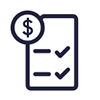Buy now, pay later (BNPL) plans are becoming more popular, especially among Gen Z and college students. While BNPL plans may offer flexibility and convenience, it’s important to be aware of some of their limitations. This article will help you compare buy now, pay later vs. credit cards to help you understand how they differ—and which is right for you.

Buy Now, Pay Later vs. Credit Card: Which is Right for You?
10 min read
Last Updated: March 26, 2025
Next steps

See if you're pre-approved

Learn about Discover student credit cards
See rates, rewards and other info
You may also be interested in
Was this article helpful?
Was this article helpful?





